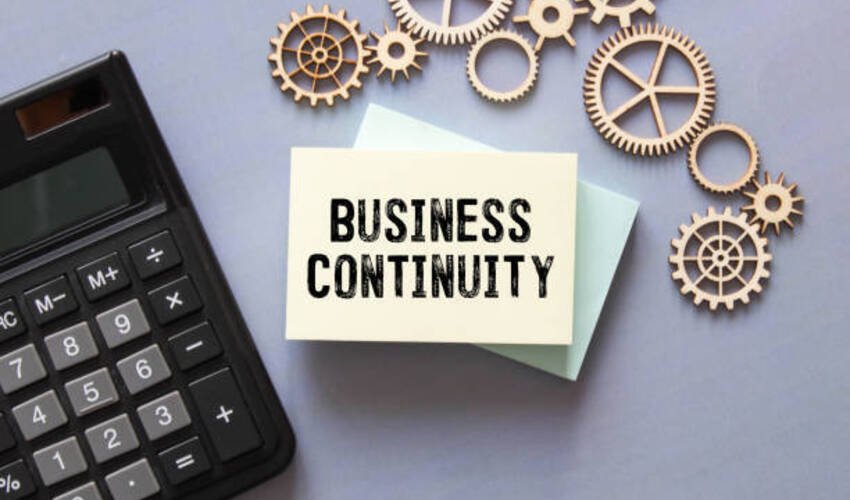Every company faces risks. Natural disasters, cyberattacks, or system failures can happen anytime. When such events occur, operations may stop suddenly. This can harm revenue, reputation, and customer trust.
The solution is planning. That is where Business Continuity Testing becomes important. It ensures companies can keep running even during disruptions. This article explains what business continuity testing is, why it matters, and how to do it.
What Is Business Continuity Testing?
Business continuity testing is a process. It checks whether a company can continue operations after unexpected events. Think of it as a rehearsal. Just like fire drills prepare people for emergencies, continuity testing prepares businesses for disruptions. The goal is simple: to confirm that critical systems, people, and processes can function during a crisis.
Why Business Continuity Testing Matters
Disruptions are unpredictable. No business can avoid them completely. But preparation reduces their impact. Without testing, a company’s plan may look good only on paper. When a real crisis comes, flaws appear. Testing helps identify those flaws early. It ensures strategies work under real conditions. It also keeps employees confident and ready.
Risks of Skipping Business Continuity Testing
Some companies write plans but never test them. This is dangerous.
- Plans may be outdated.
- Employees may not know what to do.
- Technology may not recover as expected.
- Customers may lose trust if delays occur.
Skipping testing leaves a business exposed. The cost of recovery becomes higher and longer.
How Business Continuity Testing Works
The process usually follows a few simple steps.
Step 1: Define Goals
Decide what you want to test. It could be communication, IT recovery, or staff response.
Step 2: Create Scenarios
Design a realistic disruption. For example, simulate a power outage or server failure.
Step 3: Run the Test
Employees and systems act as if the disruption is real. Actions and results are recorded.
Step 4: Review Results
Analyze what went well and what failed. Identify gaps in processes and resources.
Step 5: Improve the Plan
Update the continuity plan with the lessons learned. Prepare for the next test.
Types of Business Continuity Testing
There are several methods businesses can use.
- Tabletop Exercises: Teams discuss responses in a meeting setting.
- Walkthroughs: Employees review step-by-step recovery procedures.
- Simulation Drills: Realistic disruptions test how systems and staff react.
- Full Interruption Tests: Operations stop completely to test full recovery.
Benefits of Business Continuity Testing
1. Builds Employee Confidence
Employees know their roles. They feel prepared for emergencies.
2. Protects Revenue
Downtime is costly. Testing reduces financial losses by ensuring faster recovery.
3. Safeguards Reputation
Customers trust companies that stay reliable, even during disruptions.
4. Strengthens Compliance
Many industries require testing for legal or regulatory compliance.
5. Improves Recovery Speed
The more you practice, the faster recovery becomes during a real event.
Real-Life Example
A retail company faced a server crash. They had a continuity plan, but never tested it. When the crash happened, the staff panicked. Customers could not place orders. The downtime lasted for days. Another company in the same industry tests regularly. When their servers failed, recovery took hours, not days. The difference was simple: preparation through business continuity testing.
Common Mistakes in Business Continuity Testing
Companies sometimes make errors. Here are common ones to avoid:
- Running tests without clear objectives.
- Involving only IT staff, not all departments.
- Treating testing as a one-time task.
- Ignoring results or failing to update plans.
- Overlooking third-party vendors in recovery planning.
Best Practices for Effective Testing
To make testing valuable, companies should:
- Test regularly, at least once a year.
- Involve employees from every department.
- Create realistic scenarios based on actual risks.
- Update plans after every test.
- Train employees continuously.
How Often Should Companies Test?
The frequency depends on size and industry. Critical industries like healthcare or finance may need quarterly tests. For smaller companies, annual tests may be enough. However, whenever systems or staff change, another test should follow.
The Future of Business Continuity Testing
Technology is changing how businesses operate. Cloud systems, remote work, and cyber threats create new challenges. Future testing will include remote access failures, ransomware attacks, and supply chain disruptions. Companies must stay updated and adjust plans. Automation and AI will also play roles. They can simulate complex disruptions more accurately. This improves readiness even further.
Final Thoughts
No company is immune to disruptions. Crises can come at any time. What matters is how prepared you are. Business Continuity Testing ensures your company can survive and recover. It tests plans, trains employees, and builds resilience. Action is always better than regret. With proper testing, every company can face uncertainty with confidence.

Software Testing Lead providing quality content related to software testing, security testing, agile testing, quality assurance, and beta testing. You can publish your good content on STL.



